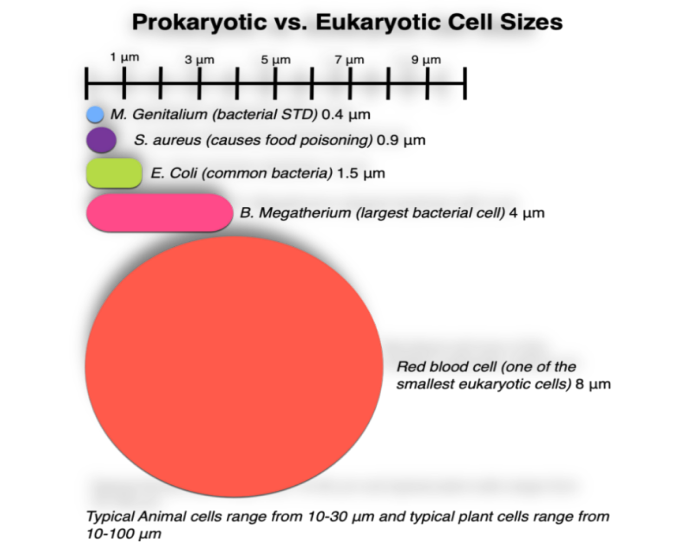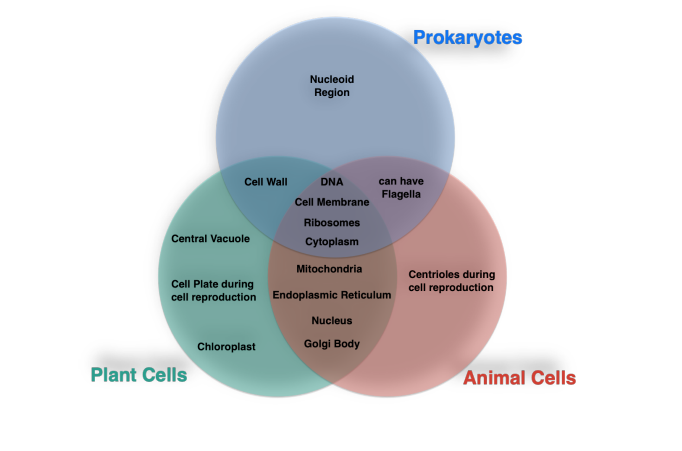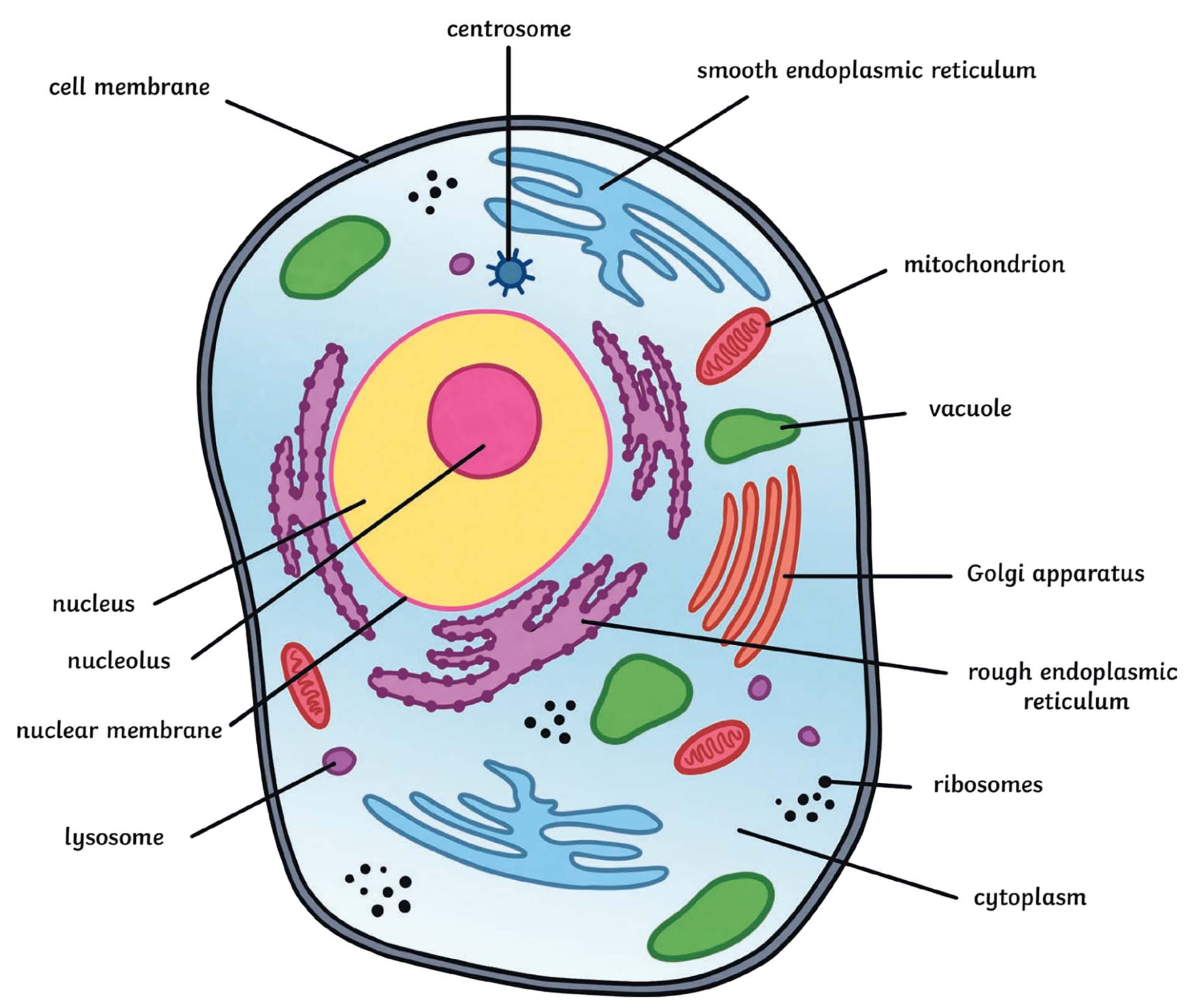
Eukaryotic Cells (Animal & Plant)
If it’s visible, it is made up of eukaryotic cells.
Eu: True
Karyotic: Nucleus
Eukaryotic cells have a true nucleus (hence the name).
They are more complex and larger than prokaryotic cells.

Eukaryotic Cells
There are two main regions in a eukaryotic cell: the nucleus and the cytoplasm. Usually, the nucleus is located near the center of the cell. The cytoplasm is the jellylike substance that fills the cell, surrounding the nucleus, holding the organelles – tiny organs inside a cell – in place, and allowing things to move throughout the cell.
Any living organism that is large enough to see without a microscope is eukaryotic. We are most familiar with plants and animals as eukaryotes, but fungi and protists (single-celled organisms with a nucleus) are also eukaryotes.
Plant Cell
The cell wall is rigid.
The cell wall prevents over-expansion/explosion when plant cell comes into contact with fresh water.
During plant cell reproduction, most plants do not use centrioles. However, during reproduction, plant cells produce a cell plate.
Vacuole stores water, salt, and proteins (not found in animal cells).
Water creates turgor pressure which keeps plants upright.
The chloroplast is where photosynthesis takes place. Chloroplasts are found in all photosynthetic cells
 Animal Cell
Animal Cell
Its boundary is its cell membrane.
They have centrioles, which are used in cell reproduction.

 Edited: 05 October 2022
Edited: 05 October 2022
Eukaryotic Cells (Animal & Plant)
If it’s visible, it is made up of eukaryotic cells.
Eu: True
Karyotic: Nucleus
Eukaryotic cells have a true nucleus (hence the name).
They are more complex and larger than prokaryotic cells.

Eukaryotic Cells
There are two main regions in a eukaryotic cell: the nucleus and the cytoplasm. Usually, the nucleus is located near the center of the cell. The cytoplasm is the jellylike substance that fills the cell, surrounding the nucleus, holding the organelles – tiny organs inside a cell – in place, and allowing things to move throughout the cell.
Any living organism that is large enough to see without a microscope is eukaryotic. We are most familiar with plants and animals as eukaryotes, but fungi and protists (single-celled organisms with a nucleus) are also eukaryotes.
Plant Cell
The cell wall is rigid.
The cell wall prevents over-expansion/explosion when plant cell comes into contact with fresh water.
During plant cell reproduction, most plants do not use centrioles. However, during reproduction, plant cells produce a cell plate.
Vacuole stores water, salt, and proteins (not found in animal cells).
Water creates turgor pressure which keeps plants upright.
The chloroplast is where photosynthesis takes place. Chloroplasts are found in all photosynthetic cells
 Animal Cell
Animal Cell
Its boundary is its cell membrane.
They have centrioles, which are used in cell reproduction.

 Edited: 05 October 2022
Edited: 05 October 2022
 Knowt
Knowt
